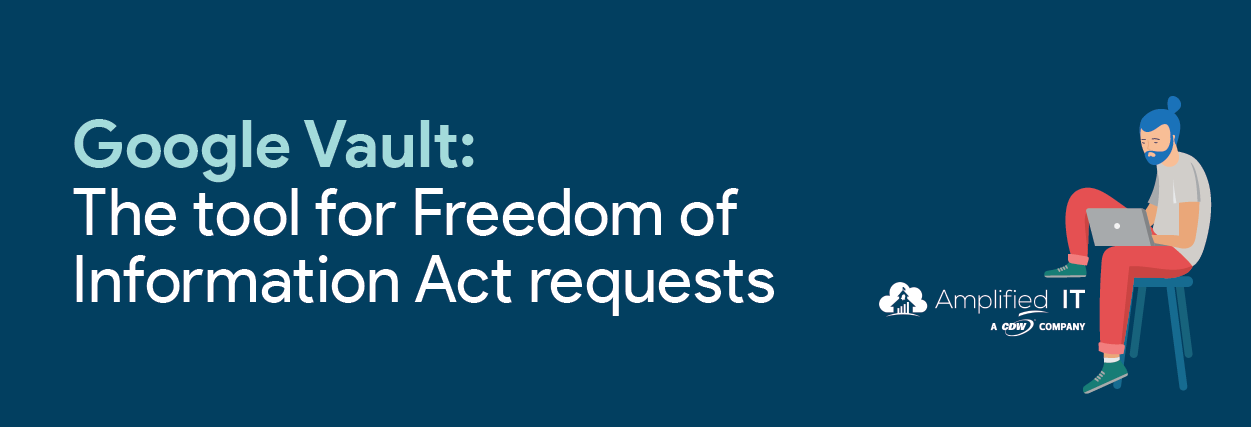Inevitably, schools receive Freedom of Information Act (FOIA) requests to disclose user information. After reviewing a request to be sure it complies with applicable laws, Google Admins get to work assembling the requested information to be delivered within the required timeframe. In satisfying FOIA requests in the allotted time, it is important to use the correct tool. While the investigation tool can provide some similar information, it falls short for FOIA requests. You are going to need Vault. It is the tool that satisfies FOIA requirements in identifying, preserving, and collecting data. Specifically for FOIA, the real power is keeping data for as long as you need it and removing data when you no longer need it.
Investigation tool vs Vault
A common misconception we see is that the investigation tool can give you the same information as Vault. Once you have a FOIA request and try to use the investigation tool, you will quickly discover that it is not the right tool for this job. The investigation tool and Vault are different tools and are used differently by Google Admins. Let’s compare.
The investigation tool:
-
Is only supported with Google Workspace Education Standard and Plus editions
-
Lets Admins identify and triage security and privacy issues on the domain
-
Lets Admins can take action resulting in a more secure domain
Vault:
-
Is available with all Google Workspace for Education versions as a core service
-
Is an information governance and eDiscovery tool created for Google Workspace
-
Lets Admins, retain, hold, search, and export users’ Google Workspace data
-
Is not a data archive (Any data not on hold falls under standard deletion processes)
When is it necessary to use Vault for information requests?
The short answer, any time there is a FOIA request. Being designed to handle information requests makes Vault the perfect tool for the job. Google Vault’s flexibility allows you to search archived data for the whole domain or individual users. The power with Vault is that you can uncover detailed information, retain the data for as long as needed, and remove the data when it is no longer needed.
If you are not familiar with Vault, you can use it for information requests related to:
-
Gmail messages
-
Drive files
-
Google Chat messages (history turned on)
-
Google Meet recordings and associated chat, Q&A, and polls logs
-
Google Groups messages
-
Google Voice for Google Workspace text messages, voicemails, and their transcripts, and call logs
-
new Google Sites
-
Classic Hangouts messages (history turned on)
Best practices
Google Vault makes monitoring communications easy as long as you have set it up. Time is critical because of the number of days schools must respond to FOIA requests. Having Vault setup and familiarizing yourself with how it works before you need it will save a lot of time when a FOIA request comes in. If you are ready to get started with Vault or review your Vault setup, consider participating in our Vault Setup and Best Practices support stack.
If you have a support contract, email support@amplifiedit.com to get started.
To purchase a support contract or add additional hours, contact your regional account manager.
-

Lorrie McConnell
Technical Writer -
About the Author:
Lorrie was born and raised near Pittsburgh, PA. She is a proud graduate of Slippery Rock and Chatham Universities. She holds degrees in Business and Professional Writing. In her role as Technical Writer, Lorrie adds clarity to all things Amplified IT. She continually looks for better ways to explain the ‘how’ and ‘why’ for our products and services. Being a Pittsburgh native, Lorrie loves all things black and gold. When she does get downtime, she enjoys family, baking, walking, and archery. A fun fact: Lorrie participated in the largest wedding cookie table which earned a Guinness World Record with 88,425 cookies!


